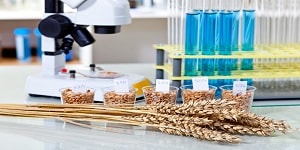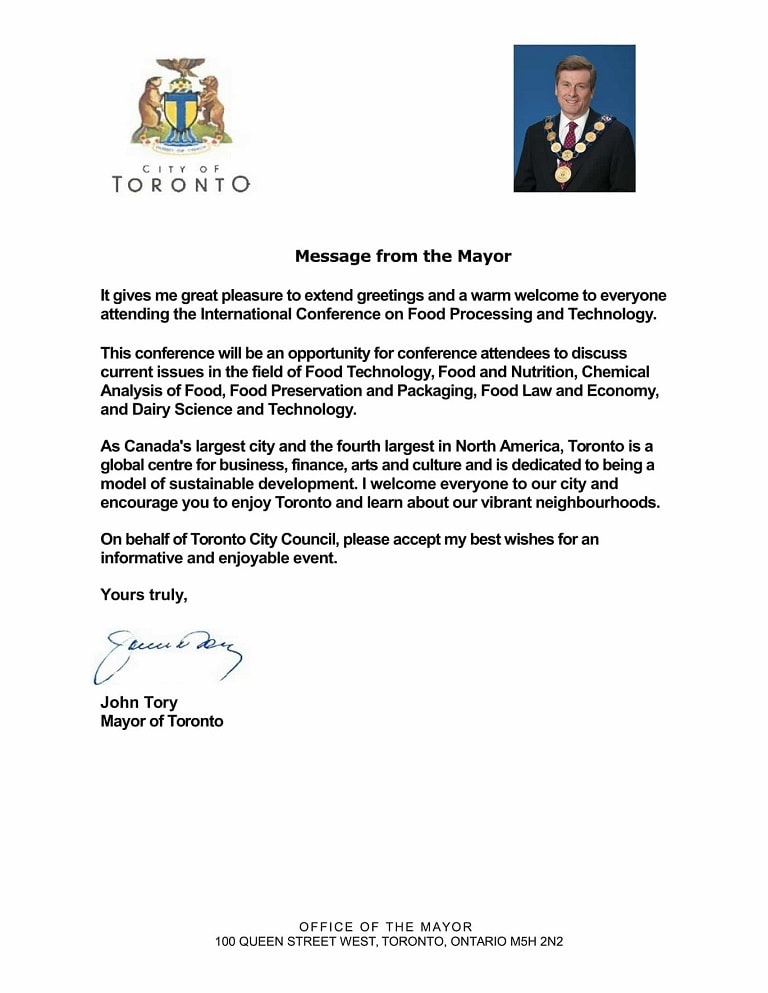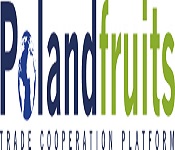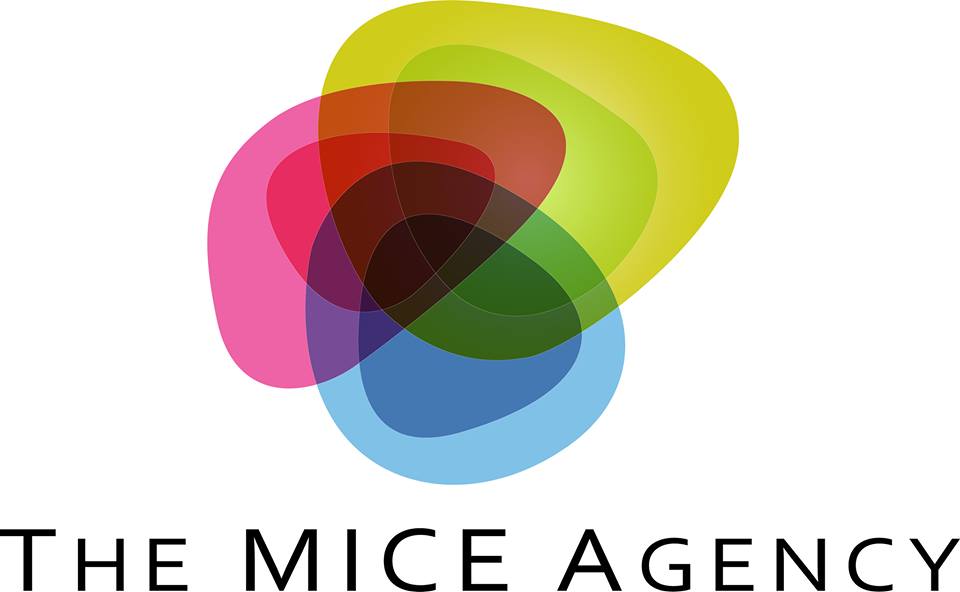
Food Technology 2018

Theme: Innovation at the Intersection of Technology, Behaviour, Design and Food
International Conference on Food Processing and Technology will be held during June 25-26, 2018 at Toronto, Canada. Food Technology Conference will focus on the theme “Innovation at the Intersection of Technology, Behaviour, Design and Food”.
Meetings International (Meetings Int.) is a worldwide pioneer in creating astounding meetings, gatherings, workshops and symposia in every single real field of science, innovation and prescription. Since its establishment, Meetings International has been associated with universal affiliations, enterprises innovative and enthusiastic state people, devoted to organize world class meetings and occasions. Meetings Int. bolsters expansive extension research and companion audit at a wide scope of authorities around the globe. The key goal of Meetings Int. is to convey science and research amongst the scholarly community, and industry.
Food Technology Conference is intended to accumulate driving judgment skills to a stage on Food Innovation and its encouragement. It is the exceptional guide to pass on all-inclusive eminent colleges in the bureau of nourishment science and innovation, researchers, theoretical scientists, sustenance analysts, researcher's and so forth. This is where you will have an extraordinary involvement with the social event. This gathering gives the creative nourishment innovation techniques and furthermore you can enhance your system comprehensively by interfacing with the different specialists identified with the field of sustenance innovation over the world.
Food Technology Meeting is comprised to offer comprehensive sessions that address current issues in the field of Food Technology, i.e. Food Science & Technology, Food & Nutrition, Chemical Analysis of Food, Food Preservation and Packaging, Food Law and Economy, Dairy Science and Technology.
Target Audience
· Food Professional from Manufacturing, Retail and Food Service Industry
· Food Auditor and Nutrition Trainer or Consultant
· Owner or Manager of Food Business
· Chef or Food & Beverage Manager working in Food Service Sector
· Food Trader or Gulfood Exhibitor
· Food Importer, Exporter or Nutrition Supplements
· Government Food and NutritionControl or Health Official
· Member of the Academia, Research Scholar, Student
· Representative of a Consumer Group
Importance
This meeting will be a significant and vital stage for moving worldwide and interdisciplinary trade at the bleeding edge of sustenance look into. Through the span of 2 days, universally famous speakers will portray how their examination travel has created in light of contemporary difficulties: motivational and imaginative lessons in sustenance inquire about. The going to specialists and industry accomplices will likewise give an awesome systems administration encounter. The arrangement of talks, notice introductions, workshops, dialogs and systems administration occasions will keep members occupied with learning and making new associations at Food Technology 2018. The Food Technology Conference will unite academicians, scientific experts, researchers, dietitians, nutritionists, engineers, technologists from everywhere throughout the world, and we trust that you will accept this open door to go along with us for scholarly trade and visit the city of Toronto.
The Scope
The scope of International Conference on Food Processing and Technology will unite agents from universal and legislative offices, the scholarly and Industrial research group, non-administrative associations and the business and specialized pioneers in the sustenance business and its store network to talk about, face off regarding and give initiative on handling a scope of genuine difficulties that face the trustworthiness of our worldwide Food supply framework. The Food Technology Workshop will highlight various abnormal state vital introductions on key issues by globally perceived pioneers. It will likewise put a firm accentuation on bridling the aggregate learning and experience of the researcher to address these difficulties through the detailing of strategy suggestions to governments and a Conference Communique.. You're welcome to submit abstracts for presentation. The core aim of Food Technology conference is to provide an opportunity for the delegates to meet, interact and exchange new ideas in the various areas of Food Processing and Technology.
Why Toronto, Canada?
Toronto is the capital of the Canadian area of Ontario. It is situated inside the Golden Horseshoe in Southern Ontario on the northern shore of Lake Ontario. With 2,731,571 occupants in 2016, it is the biggest city in Canada and fourth-biggest city in North America by populace. Toronto is a focal point of business, back, expressions, and culture, and is perceived as a standout amongst the most multicultural and cosmopolitan urban communities on the planet. From the mid-nineteenth century ahead, Toronto has been a developing business metropolitan zone. In the 1850s, Toronto saw a quick increment in its urbanization with steamboat port movement and railroad building. The city was made the capital of Ontario in 1867, and by 1891, the city's populace was more than 150,000.In 1976, following 40 months of development, the CN Tower wound up plainly open to the general population. Today, the CN Tower remains as the world's tallest working at 553.33 meters (1,815 feet and 5 inches). By 1998, Toronto was authoritatively known as a "megacity." At a populace of 2.4 million, it is known as the fifth biggest city in North America. Canadians are known for our well disposed nature, and Toronto's nationals take extraordinary pride in our inviting, perfect, safe lanes - day or night, throughout the entire year.
Session 1: Food Science & Technology
The dedication of sustenance science and innovation experts to propelling the investigation of nourishment, guaranteeing a sheltered and copious food supply, and adding to more beneficial individuals wherever is fundamental to that development. Sustenance researchers and technologists are flexible, interdisciplinary, and community oriented specialists in a calling at the intersection of logical and mechanical improvements. As the sustenance framework has radically changed, from one based on family Food generation on singular ranches and nourishment conservation to the cutting edge arrangement of today, the vast majority are not associated with their nourishment nor are they comfortable with farming creation and Food fabricating intended for better food safety and quality".
Food Processing Conference | Food Technology Workshop | Food Processing Meeting | Food Technology Congress | June Conference | Canada Event | Meeting International
Related Societies and Associations:
Guelph Food Technology Centre, Canada; North American Meat Processors Association, USA; Processed Vegetable Growers' Association, UK; European Federation of Food Science and Technology, Netherlands; Food Science and Technology Abstracts, UK; Australian Institute of Food Science and Technology, Australia; International Union of Food Science and Technology, Canada; Applied Food Technologies, USA; German Institute of Food Technologies, Germany; Institute of Food Technologists, USA.
Session 2: Food and Nutrition
Food has been a fundamental piece of our reality. Admission of nourishment guarantees development in kids and youth, keeps up great wellbeing all through life. Supplements are segments of sustenances required for body in sufficient sums for legitimate development, multiplication and driving ordinary life. Nourishment incorporates the procedure from eating sustenance to its utilization in different elements of body. The exploration of sustenance manages what supplements we require, in what amount, how to get them and how the body uses them. Sufficient, ideal and great nourishment demonstrates the perfect sum and extent of supplements for appropriate usage for accomplishing most elevated amount of physical and psychological well-being. The utilization of sustenance in the body includes three procedures – processing, assimilation and use of supplements in the body.
Food Processing Conference | Food Technology Workshop | Food Processing Meeting | Food Technology Congress | June Conference | Canada Event | Meeting International
Related Societies and Associations:
Association for the Study of Food and Society, USA; American Anthropological Association, USA; The North American Food Systems Network (NAFSN), USA; AFJ Association of Food Journalists, USA; IACSIT Food and Agriculture Society (FES), Asia; Korean Society of Food Science and Technology, Asia; Catalan Food Safety Agency, USA; Canadian Restaurant and Foodservices Association, Canada; Committee on World Food Security, Italy; North American Meat Processors Association, USA; Processed Vegetable Growers' Association, UK.
Session 3:Food Chemistry
It is like organic chemistry in its principle parts, for example, sugars, lipids, and protein, yet it likewise incorporates regions, for example, water, vitamins, minerals, chemicals, food added substances, flavors, and hues. This train additionally includes how items change under certain nourishment preparing procedures and routes either to upgrade or to keep them from happening. A case of upgrading a procedure is support aging of dairy items with microorganisms that change over lactose to lactic corrosive; a case of keeping a procedure would stop the searing on the surface of newly cut Red Delicious apples utilizing lemon juice or other acidulated water.
Food Processing Conference | Food Technology Workshop | Food Processing Meeting | Food Technology Congress | June Conference | Canada Event | Meeting International
Related Societies and Associations
Scotland Food & Drink, Scotland; SAFE FOODS, USA; Processed Vegetable Growers Association, Australia; Potato Council, USA; Norwegian Ministry of Agriculture and Food Landbruks, Norwegian; Norwegian Food Safety Authority Mattilsynet, Norwegian; Australian Institute of Food Science and Technology, Australia; International Commission on Microbiological Specification for Foods, Australia.
Session 4: Food Safety, Security and Control
Food Safety and security is a condition identified with the supply of sustenance, and people's entrance to it. Worries over nourishment security have existed all through history, the FAO announced that just about 870 million individuals were constantly undernourished in the years 2010– 2012. This speaks to 12.5% of the worldwide populace, or 1 of every 8 individuals. Higher rates happen in creating nations, where 852 million individuals (around 15% of the populace) are incessantly undernourished. The UN noticed that around 2 billion individuals don't expend an adequate measure of vitamins and minerals.
Food Processing Conference | Food Technology Workshop | Food Processing Meeting | Food Technology Congress | June Conference | Canada Event | Meeting International
Related Societies and Associations:
The Food and Beverage Export Association, Italy; ISEKI-food Association, Austria; Safe Foods, UK; Advisory committee on the microbiological safety of food, UK; Asian Food Safety and Security Association, Japan; Association for the Study of Food and Society, USA; American Anthropological Association, USA; The North American Food Systems Network (NAFSN), USA; AFJ Association of Food Journalists, USA; IACSIT Food and Agriculture Society (FES), Asia; Korean Society of Food Science and Technology, Asia.
Session 5: Food Preservation and Packaging
The global revenue of preservation, packaging and shelf life extenders was $428.1 billion in 2011 and reached nearly $442.3 billion in 2012. The market is expected to rise at a CAGR of 3.3% and reach $520.9 billion by 2017.
Food Processing Conference | Food Technology Workshop | Food Processing Meeting | Food Technology Congress | June Conference | Canada Event | Meeting International
Related Societies and Associations:
Guelph Food Technology Centre, Canada; North American Meat Processors Association, USA; Processed Vegetable Growers' Association, UK; European Federation of Food Science and Technology, Netherlands; Food Science and Technology Abstracts, UK; Australian Institute of Food Science and Technology, Australia; International Union of Food Science and Technology, Canada; Applied Food Technologies, USA; German Institute of Food Technologies, Germany; Institute of Food Technologists, USA.
Session 6: Food and Beverages Processing
Business and associations that deliver, oversee, manage, and disperse food and beverages involve the sustenance and drink generation industry. The worldwide handled sustenance and drink market will experience huge change throughout the following year because of the immediate effect of key Mega Trends including the rise of new plans of action that will change nourishment retail, the effect of evolving economics, associated eating in the subjective time, and the proceeded with ascent of "opportunity sustenance." Valued at $4.601 trillion of every 2016, incomes are relied upon to reach $4.675 trillion by 2017 given a year-on-year development of 1.6%, in spite of the fact that income direction fluctuates broadly by item section and geology.
Food Processing Conference | Food Technology Workshop | Food Processing Meeting | Food Technology Congress | June Conference | Canada Event | Meeting International
Related Societies and Associations:
Association for the Study of Food and Society, USA; American Anthropological Association, USA; The North American Food Systems Network (NAFSN), USA; AFJ Association of Food Journalists, USA; IACSIT Food and Agriculture Society (FES), Asia; Korean Society of Food Science and Technology, Asia; Catalan Food Safety Agency, USA; Canadian Restaurant and Foodservices Association, Canada; Committee on World Food Security, Italy; North American Meat Processors Association, USA; Processed Vegetable Growers' Association, UK.
Session 7: Food Microbiology
Bacteria are the most important microorganisms to the food processor. Most are harmless, many are highly beneficial, some indicate the probable presence of filth, disease organisms, spoilage and a few cause disease. In 2016, the global food microbiology market totaled 1.14 billion tests, up from 966 million tests in 2013 (and 738 million tests in 2008).
Food Processing Conference | Food Technology Workshop | Food Processing Meeting | Food Technology Congress | June Conference | Canada Event | Meeting International
Related Societies and Associations:
Scotland Food & Drink, Scotland; SAFE FOODS, USA; Processed Vegetable Growers Association, Australia; Potato Council, USA; Norwegian Ministry of Agriculture and Food Landbruks, Norwegian; Norwegian Food Safety Authority Mattilsynet, Norwegian; Australian Institute of Food Science and Technology, Australia; International Commission on Microbiological Specification for Foods, Australia.
Session 8: Food Law and Economy
The Food Economy is progressively formed by such new issues as maintainability, wellbeing and quality models, customer wellbeing, and industry focus. The nourishment economy becomes always worldwide and includes more tricky components like put stock in, honesty, straightforwardness, corporate social obligation and making passionate securities with clients. The sustenance economy is inseparably interrelated with globalization, changes in buyer interest for nourishment and vitality, the ICT upset, supportability issues, and moves in the connection between privately owned businesses and open controllers. There are numerous approaches to consider nourishment which has been examined in different food meetings, food gatherings in the most straightforward sense, sustenance is a fuel, nourishment gives the vitality expected to perform day by day works and keep up typical metabolic procedures.
Food Processing Conference | Food Technology Workshop | Food Processing Meeting | Food Technology Congress | June Conference | Canada Event | Meeting International
Related Societies and Associations:
The Association of Food Technology, Turkey; ISEKI Food Association, Austria; Alder Food Security Society, Canada; Richmond Food Security Society Canada; Catalan Food Safety Agency, Spain; Canadian Restaurant and Foodservices Association, Canada; IACSIT Food and Agriculture Society (FES), Asia.
Session 9: Food Waste and Recycling
As per the "Waste Control Act", which was made to accumulate the important premise information for the foundation of waste administration arrangements, current data on squander age and treatment is gathered and routinely refreshed, including the measures of waste produced by type, local circulations, and changes in transfer designs. A "National Waste Statistics Survey" is led like clockwork, and a "National Waste Generation and Treatment" and a "National Designated Waste Generation and Treatment" are directed every year.
Food Processing Conference | Food Technology Workshop | Food Processing Meeting | Food Technology Congress | June Conference | Canada Event | Meeting International
Related Societies and Associations:
The Food and Beverage Export Association, Italy; ISEKI-food Association, Austria; Safe Foods, UK; Advisory committee on the microbiological safety of food, UK; Asian Food Safety and Security Association, Japan; Association for the Study of Food and Society, USA; American Anthropological Association, USA; The North American Food Systems Network (NAFSN), USA; AFJ Association of Food Journalists, USA; IACSIT Food and Agriculture Society (FES), Asia; Korean Society of Food Science and Technology, Asia.
Session 10: Food Biotechnology
Food science involving the use of scientific tools and techniques, including genetic engineering, molecular markers, molecular diagnostics, vaccines, and tissue culture, to modify living organisms: plants, animals, and microorganisms. The global market for agricultural biotechnology reached $29.2 billion in 2016. This market should reach $32.1 billion in 2017 and $53.7 billion in 2022, with a compound annual growth rate (CAGR) of 10.8%.
Food Processing Conference | Food Technology Workshop | Food Processing Meeting | Food Technology Congress | June Conference | Canada Event | Meeting International
Related Societies and Associations:
Association for the Study of Food and Society, USA; American Anthropological Association, USA; The North American Food Systems Network (NAFSN), USA; AFJ Association of Food Journalists, USA; IACSIT Food and Agriculture Society (FES), Asia; Korean Society of Food Science and Technology, Asia; Chinese American Food Society, USA.
Session 11: Dairy Science and Technology
All in all sustenance and dairy science incorporates investigation situated towards nourishment microbiology and maturation, mass scale preparing and creation, nourishment borne pathogens, pilot and mass scale related designing and enhancement, food science and organic chemistry, examination for novel and safe fixings, nourishment quality, nutrigenomics, handling and safeguarding, drain item, dairy innovation and dairy by items, systems engaged with handling, stockpiling, bundling, circulation and transportation of drain or drain items and so forth.
Food Processing Conference | Food Technology Workshop | Food Processing Meeting | Food Technology Congress | June Conference | Canada Event | Meeting International
Related Societies and Associations
Guelph Food Technology Centre, Canada; North American Meat Processors Association, USA; Processed Vegetable Growers' Association, UK; European Federation of Food Science and Technology, Netherlands; Food Science and Technology Abstracts, UK; Australian Institute of Food Science and Technology, Australia; International Union of Food Science and Technology, Canada; Applied Food Technologies, USA; German Institute of Food Technologies, Germany; Institute of Food Technologists, USA.
Session 12: Nutraceuticals & Nutrition Supplements
The global sports nutrition market accounted for $28.37 billion in 2016 and is expected to reach $45.27 billion by 2022, growing at a CAGR of around 8.1% between 2017 and 2022, according to a new report from Zion Market Research. The nutraceuticals industry continues to be in a healthy position overall and future forecasts are promising. For example, Euromonitor International expects the U.S. vitamin and dietary supplement market to increase by 53% to $28.7 billion by 2021.
Food Processing Conference | Food Technology Workshop | Food Processing Meeting | Food Technology Congress | June Conference | Canada Event | Meeting International
Related Societies and Associations:
American College of Nutrition, USA; American Society for Clinical Nutrition, USA; Society for Nutrition Education and Behavior, USA; The Nutrition Society of Australia, Australia; French Society for Clinical Nutrition, France; British Association for Applied Nutrition & Nutritional therapy, UK; American Society for Nutrition, USA; The European Nutrition for Health Alliance, UK; Australian Society for Parenteral & Enteral Nutrition, Australia; Japan Society of Nutrition and Food Science, Japan.
Session 13: Food and Obesity
Weight reduction and eating regimen administration is a test for many individuals around the globe. All inclusive, more than 1 billion individuals are over a perfect weight. Notwithstanding the negative social impacts being overweight has on an individual, the wellbeing impacts can be savage. The influences weight has on hazardous or life changing sickness are obliterating. Illnesses, for example, diabetes, coronary illness, and disease all have connections to being overweight or corpulent. Expanding training endeavors, open weight administration designs and sustenances, and a developing want to be physically attractive have energized this market in later years. More than 100 million individuals in the United States are effectively associated with a weight reduction or weight administration design at any one time consistently. This proposes an interest for items and administrations which will proceed for quite a long time to come.
Food Processing Conference | Food Technology Workshop | Food Processing Meeting | Food Technology Congress | June Conference | Canada Event | Meeting International
Related Societies and Associations:
American College of Nutrition, USA; American Society for Clinical Nutrition, USA; Society for Nutrition Education and Behavior, USA; The Nutrition Society of Australia, Australia; American Nutrition Association, USA; The International Society of Sports Nutrition, USA; The German Society for Nutrition Medicine, Germany.
Session 14: Food and Public Health Research
In the field of medicine, clinicians cure diseases and injuries one patient one time. But in public health, the disease prevention and injury. Public health educators, practitioners and researchers effort with groups and people. They recognize the reasons of disease and incapacity. They instrument broader scale solutions.
Food Processing Conference | Food Technology Workshop | Food Processing Meeting | Food Technology Congress | June Conference | Canada Event | Meeting International
Related Societies and Associations:
American College of Nutrition, USA; American Society for Clinical Nutrition, USA; Society for Nutrition Education and Behavior, USA; The Nutrition Society of Australia, Australia; French Society for Clinical Nutrition, France; British Association for Applied Nutrition & Nutritional therapy, UK; American Society for Nutrition, USA; The European Nutrition for Health Alliance, UK; Australian Society for Parenteral & Enteral Nutrition, Australia; Japan Society of Nutrition and Food Science, Japan.
The International Conference on Food Processing & Technology to be held at Toronto, Canada during June 25-26, 2018 hosted by Meeting International through the theme "Innovation at the Intersection of Technology, Behaviour, Design and Food", conference will explore the advances in Food Science, Technology, Dietician, Nutrition and Chemistry etc. It will be a premier event that brings together a unique and International mix of experts, researchers and decision makers both from academia and industry across the globe to exchange their knowledge, experience and research innovations to build a world Food Scientist & Nutritionist meet.
Importance of Conference:
Food Technology Conference offers a fantastic opportunity to meet and make new contacts in the field of Food Processing & Technology, by providing collaboration spaces and break-out rooms with tea and lunch for delegates between sessions with invaluable networking time for you. It allows delegates to have issues addressed on Food Science by recognized global experts who are up to date with the latest developments in the Food Technology field and provide information on new techniques and technologies. This International Food Technology conference will feature world renowned keynote speakers, plenary speeches, young research forum, poster presentations, technical workshops and career guidance sessions.
Research and Business Value:
1. Globally:
The global food and beverage industry is growing at 3.5% a year and is expected to be worth more than US$7 trillion by 2014. Key trends for new product development are in health, convenience, naturality and sustainability. New foods based on fruits and vegetables fulfill many of the demands of the premium consumer. The intrinsic “health halo” of natural produce make ingredients derived from fruits and vegetables highly sought after in the global marketplace. The market for functional foods – foods that offer benefits beyond basic nutrition – is one of the fastest growing segments of the global food industry. Foods and beverages that offer validated health claims account for around US$25 billion of global sales, he wider functional food market, including rehydration and sports drinks and foods with softer health claims, is estimated to be worth around US$200 billion.
2. North-America Region:
The prevention of diet-related diseases is one of the new societal challenges of the 21st century. In October 2011, the world population passed the 7 billion mark. Such growth will put a massive strain on the global food supply. These factors alone make the production and distribution of food a critical issue for the 21st century. The organic food industry is one of the fastest growing sectors of U.S. agriculture. Consumer demand for organic food has continued to grow at a steady pace of 20% or more annually since the 1990s. About 73% of conventional grocery stores and nearly 20,000 natural food stores carry organic products, accounting for approximately 2.5% of total food sales in the United States. Domestic sales estimates of organic foods are $17 billion (all amounts are in U.S. dollars) for 2006, with 39% of those sales for fruit and vegetables (Organic Trade Association 2006). The current demand for organic produce is increasing faster than supply, resulting in expanding trade gaps between imports and exports. The organic sector of the U.S. agricultural system is demanding increased attention from producers, retailers, consumers, and policy makers interested in environmental and health issues within the food system.
3. Europe:
The major manufacturing hubs in the globe is Europe which constitute the majority share in the food flavors and enhancer market along with North America. European market is a mature market and has several regulatory bodies to regulate stringently the use of food flavors and enhancers, thereby taking care of the consumers of the nations. Germany constitutes the major share having 24% followed by the UK (23%), Spain (10%), Netherland (5%) and Italy (9%). $ 823 million US dollar is the market size by value of the synthetic flavor and $ 755.65 million US dollar is the market size by value of the natural in the year 2014.
4. Asia pacific:
Asia Pacific is a huge and increasingly influential market in the supply of food and beverage ingredients. As well as accounting for 35% of global value added ingredient supply in this category, it is also a melting point of diverse trends and influences. In 2012, Asia Pacific accounted for 35% of global use of value-added food and drink ingredients, equivalent to almost 8.5 million tones out of a global total of 24.2 million tones. Asia Pacific is also one of the fastest growing regions, with a forecast CAGR of 4% over 2012-2017, behind only the Middle East and Africa, with 5%. This means that by 2017, Asia will have increased its share of the global total to 38%.
Universities & Research Institutions:
Universities in USA
University of California- Davis, Cornell University- New York, Harvard University- Massachusetts University of Massachusetts- Amherst, University of Wisconsin- Madison, University of Minnesota- Twin Cities, Rutgers, the State University of New Jersey- New BrunswickUniversity of Illinois- Champaign, Michigan State University- Michigan, Ohio State University-ColumbusIowa State University- Iowa.
Research Institution in USA
Government of Antigua and Barbuda- Antigua and Barbuda, Association of Dietitians and Nutritionist-Dietitians- Argentina, Ministry of Health- Bahamas, National Nutrition Centre, Ministry of Health- Barbados, Ministry of Health- Belize, Secretariat of Health Care, Ministry of Health- Brazil, Institute of Nutrition and Food Technology (INTA)- Chile, Instituto Colombiano de Bienestar Familiar- Colombia, Ministry of Health- Costa Rica Institute of Nutrition and Food Hygiene- Cuba, Health Promotion Department, Ministry of Health and Social Security- Dominica, Ministry of Public Health- Dominican Republic, Nutrition Department, Ministry of Health- El Salvador.
Research Institutions in Europe
Ministry of Health- Albania, Ministry of Health- Austria, Federal Public Service Health, Food Chain Safety and Environment- Belgium, Institute of Public Health of Federation of Bosnia and Herzegovina- Bosnia and Herzegovina, Ministry of Health- Croatia, Ministry of Health- Cyprus, Ministry of Food, Agriculture and Fisheries- Denmark, National Institute for Health Development- Estonia, National Nutrition Council- Finland, Ministry of Health- France.
Universities in Asia
China Agricultural University- China, Zhejiang University- China, Jiangnan University- China, Nanjing Agricultural University- China, South China University of Technology- China, Northwest A&F University- China, University Putra Malaysia- Malaysia, National Taiwan University- Taiwan Eoul National University- South Korea, University of Tehran- Iran, National Chung Hsing University- Taiwan,Huazhong Agricultural University- China, University of Tokyo- Japan.
Research Institutions in Asia
National Health and Medical Research Council- Australia, Endocrine and Metabolic Disorders- Bangladesh, Chinese Nutrition Society- China, Ministry of Health- Fiji, National Institute of Nutrition- India, Japan Ministry of Agriculture, Forestry and Fisheries, Food Safety and Consumer Affairs Bureau- Japan, Ministry of Health- Malaysia, Nutrition Research Department, Ministry of Health- Mongolia, Ministry of Health and Population- Nepal, Ministry of Health- New Zealand, Food and Nutrition Research Institute- Department of Science and Technology.
Universities in Middle East
American University in Cairo- Egypt, Cairo University- Egypt, Ain Shams University- Egypt, Alexandria University- Egypt, Mansoura University- Egypt, Universities in Israel- Universities in Israel, Hebrew University of Jerusalem- Israel, Technion-Israel Institute of Technology- Israel, el Aviv University- Israel, American University of Beirut (AUB) - Lebanon, Université Saint-Joseph de Beyrouth (USJ)- France, Universities in Qatar- Qatar.
Research Institutions in Middle east
Ministry of Health and Medical Education- Iran, Ministry of Health- Oman, Supreme Council of Health- QataR, Association in USA, ASN (American Society for Nutrition), American Nutrition Association, USDA (United States Department of Agriculture, Eat right (Academy of Nutrition and Dietetics), NS75 (The Nutrition Society), World Public Health Nutrition Association, Academy of Nutrition and Dietetics.
Association in Europe
· FenS (Federation of European Nutrition Societies)- Dublin
· Society of nutrition and food science- Germany
· EUFIC (European Food Information Council)- Belgium
· IUNS (International union of nutritional sciences- UK
. Food and Agriculture Organization of the United Nations- Italy
Association in Asia
· The parental and enteral nutrition society of asia (PENSA)- Korea
· Asia pacific clinical nutrition society- China
· National Institute of Nutrition- India
· Federation of Asian Nutrition Societies (FANS)- Japan
· Indian Council of Medical Research (ICMR)- India
· World Health Organisation- India
Future Prospect:-
Worldwide advance in enhancing human nourishment will proceed, yet in numerical terms it will be moderate. Indeed, even by 2030, countless destitute individuals will stay under-supported unless nearby nourishment creation is given higher need and disparity of access to sustenance is diminished. Be that as it may, the lower frequency of undernourishment will make the issue more tractable through national and worldwide arrangement mediations advance in nourishment have been huge.
Flexibility from hunger isn't just a fundamental human right: it is basic for the full happiness regarding different rights, for example, wellbeing, training and work, and everything that streams from these.The world has gained huge ground in raising sustenance levels in the course of recent decades. These levels are most usually measured as far as kilocalories per individual every day. Individuals in creating nations require between 1 720 and 1 960 kcal every day for basal digestion and light activity.World normal nourishment utilization per individual has ascended by right around a fifth, from 2 360 kcal per individual for every day in the mid-1960s to 2 800 kcal per individual for each day today.The most recent World Bank appraisal of future monetary development is less hopeful than its forerunners, however despite everything it anticipates an ascent of 1.9 percent a year in per capita salaries in the vicinity of 2000 and 2015, higher than the 1.2 percent found in the 1990s. What will happen to the frequency of destitution under this general monetary situation is of extraordinary significance to sustenance security since neediness and craving are nearly related. The World Bank has assessed the ramifications of its financial development projections for neediness decrease by the year 2015. They are that:
• It is possible to achieve the goal of halving the proportion of people living in absolute poverty - defined as an income below US$1 per day - by 2015, over the 1990 level.
• However, it is unlikely that the number of poor people can also be halved. This will decline from 1.27 billion in 1990 to 0.75 billion in 2015.
• Much of the decline will be due to development in East and South Asia. Indeed, about half of the decline of 400 million projected for East Asia has already occurred.
• Only in sub-Saharan Africa, where incomes are expected to grow very slowly, are the numbers living in poverty expected to rise, from 240 million in 1990 to 345 million in 2015. By then, two out of five people in the region will be living in poverty.Average nutrition will improve, but under-nourishment will fall only slowlyIn the light of these changes in population and incomes, progress in improving nutrition is expected to continue, though more slowly than in the past. Average per capita food consumption in developing countries is projected to rise by 6.3 percent, from 2 680 kcal in 1997-99 to 2 850 kcal in 2015. This is a third of the rise achieved between 1974-76 and 1997-99.The slowdown is occurring not because of production limits but because many countries have now reached medium to high levels of consumption, beyond which there is less scope than in the past for further increases. Huge countries such as China, where per capita consumption rose from 2 050 kcal per day in the mid-1970s to over 3 000 kcal per day today, have already passed the phase of rapid growth. More and more countries will be attaining such levels over the projection period.
Conclusion:-
In numerous nations, including a portion of the more crowded ones, the relative predominance of undernourishment will decrease essentially with this approach. Less nations than at present will have elevated amounts of undernourishment, none of them in the most crowded class. The issue of undernourishment will have a tendency to end up plainly lesser as far as both supreme numbers influenced and, considerably more, in relative terms, subsequently it will turn out to be more tractable through arrangement mediations, both national and international.Now that you have all the data you require on eating healthy, the most vital activity step you can do is to keep up this direction for living however much as could be expected. Post purposes when you require inspiration from others. Keep a journal of your sustenance decisions on your blog or diary. Converse with other individuals when you are feeling enticed to enjoy undesirable pastries.
Reference:-
- http://www.ibisworld.com/industry/nutritionists-dietitians.html
- http://www.strategyr.com/MarketResearc/Sports_and_Fitness_Nutrition_Supplements_Market_Trends.asp(global industry analyst)
- Global Nutrition and Supplements Market: History, Industry Growth, and Future Trends by PMR release/2015/01/27/700276/10117198/en/Global-Nutrition-and-Supplements-Market-History-Industry-Growth-and-Future-Trends-by-PMR.html)
- Food Science and Technology
- Food and Nutrition
- Chemical Analysis of Food
- Food Safety, Security and Control
- Food Preservation and Packaging
- Food Beverages Processing
- Food Microbiology
- Food Law and Economy
- Halal Food
- Food Biotechnology
- Dairy Science and Technology
- Nutraceuticals & Nutrition Supplements
- Food and Obesity
- Food and Public Health Research
9 Organizing Committee Members
4 Renowned Speakers
Christopher Bryant
Professor,
University of Montreal & University of Guelph
Canada
Nikola Pacinovski
Assistant Professor
Ss Cyril and Methodius
Macedonia
Shin-ichi Kayano
Kio University
Japan
Muhammad Usman
Former Director General
Agriculture Research System
Pakistan










































































































































